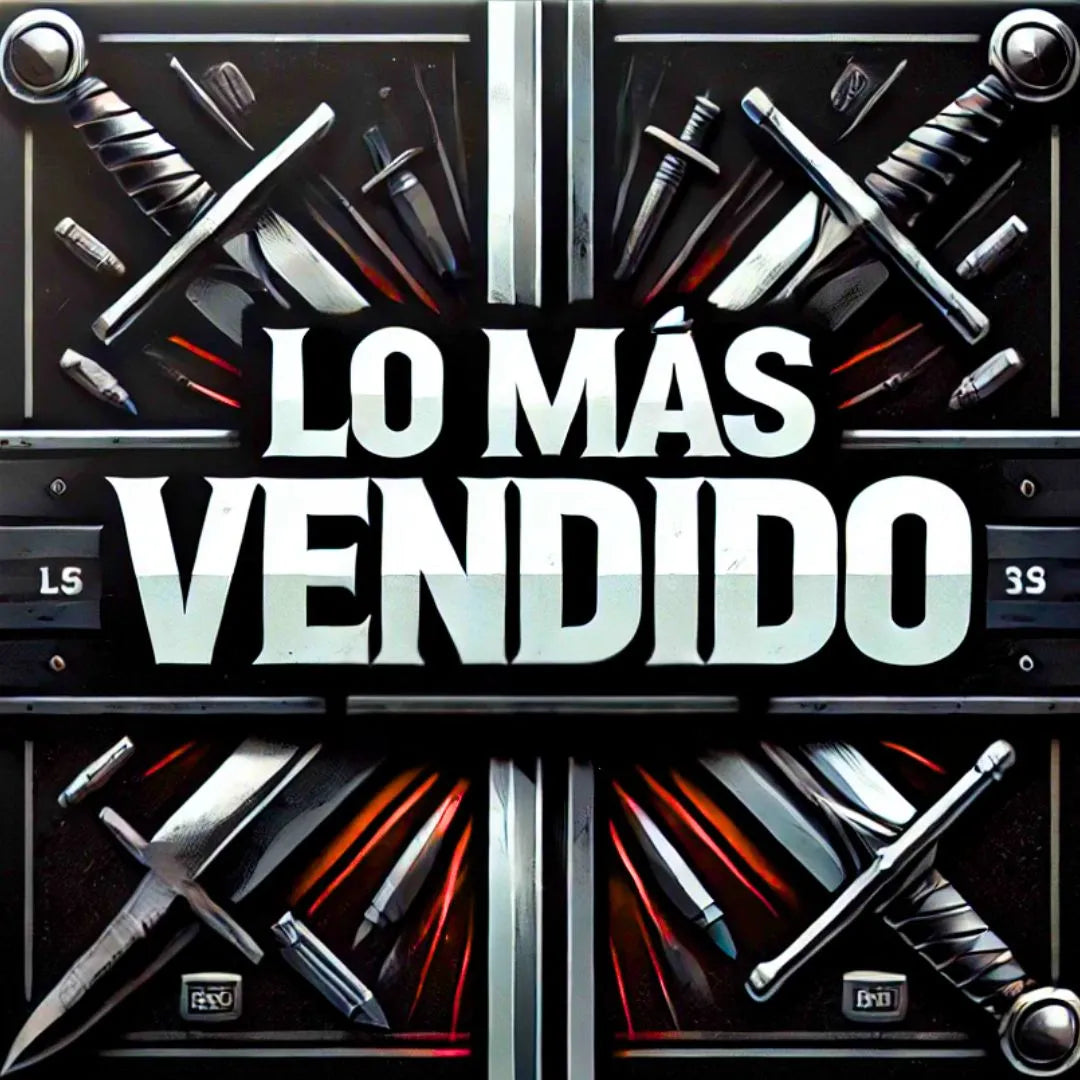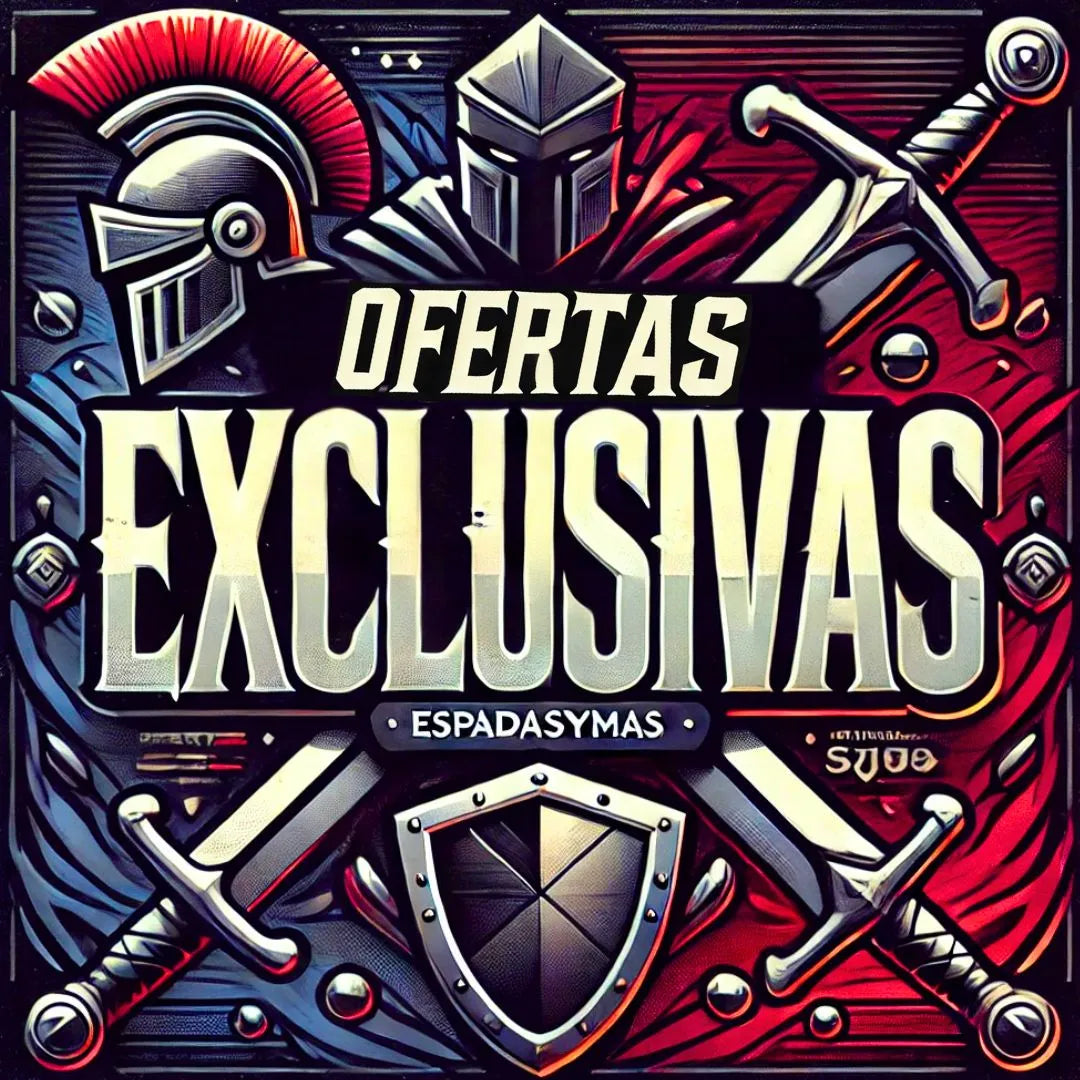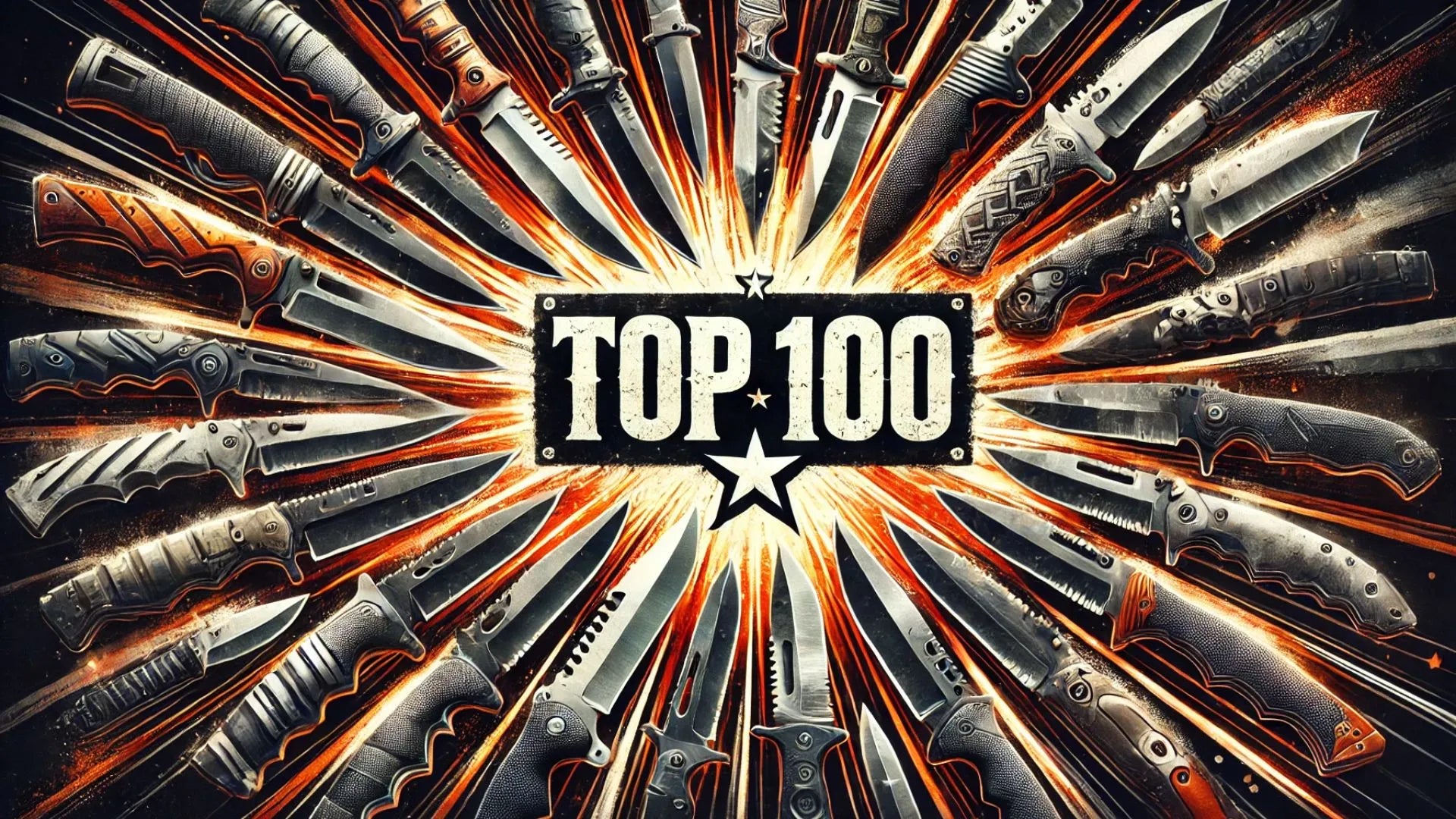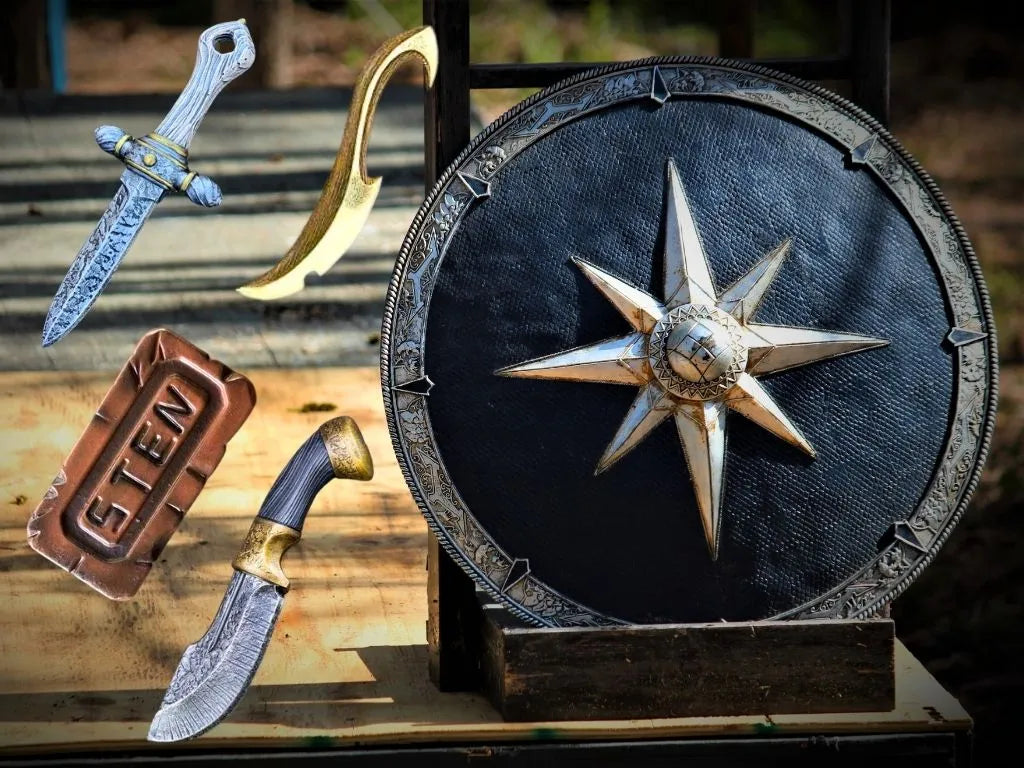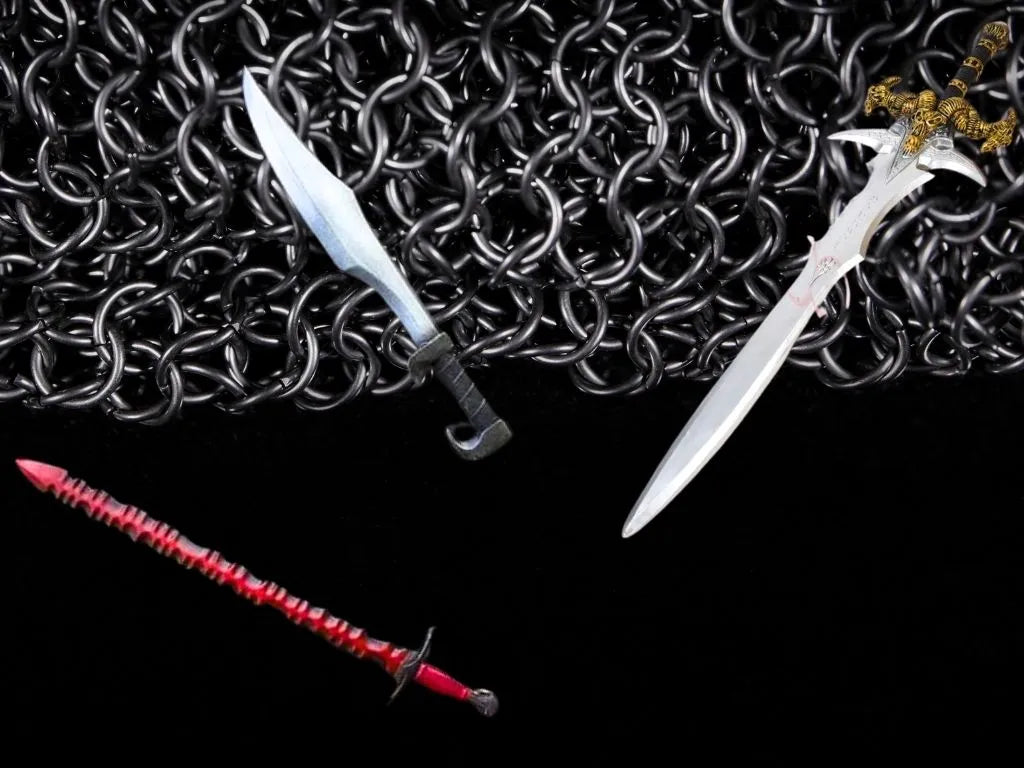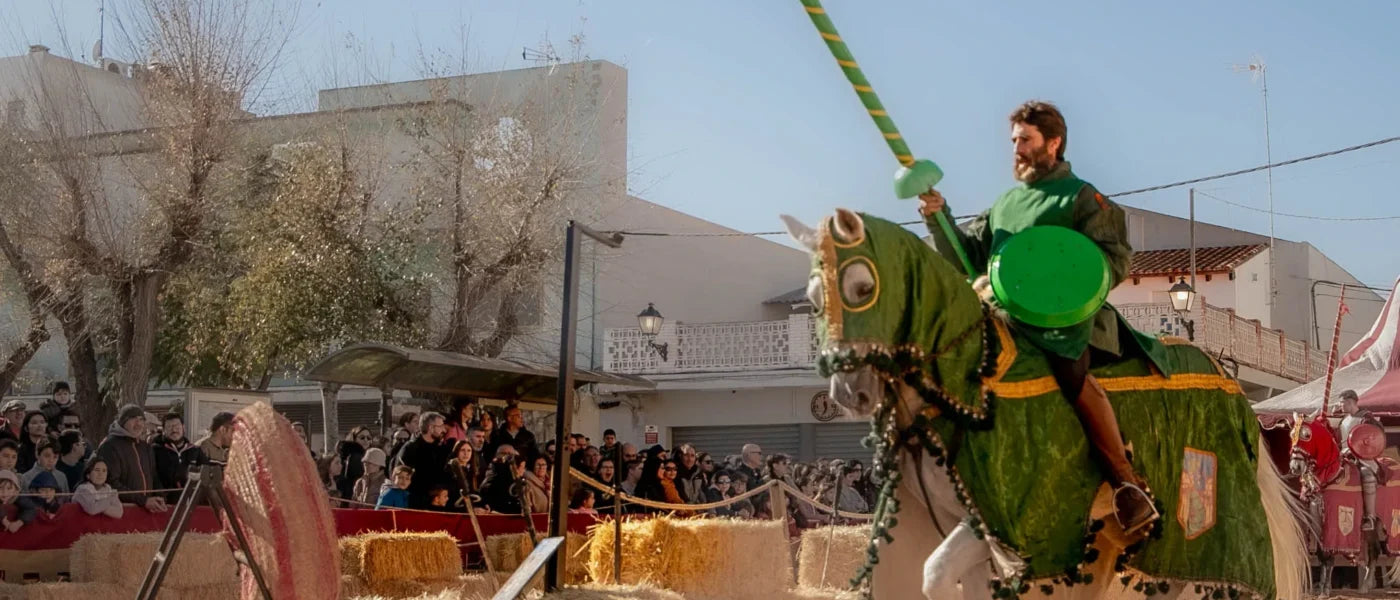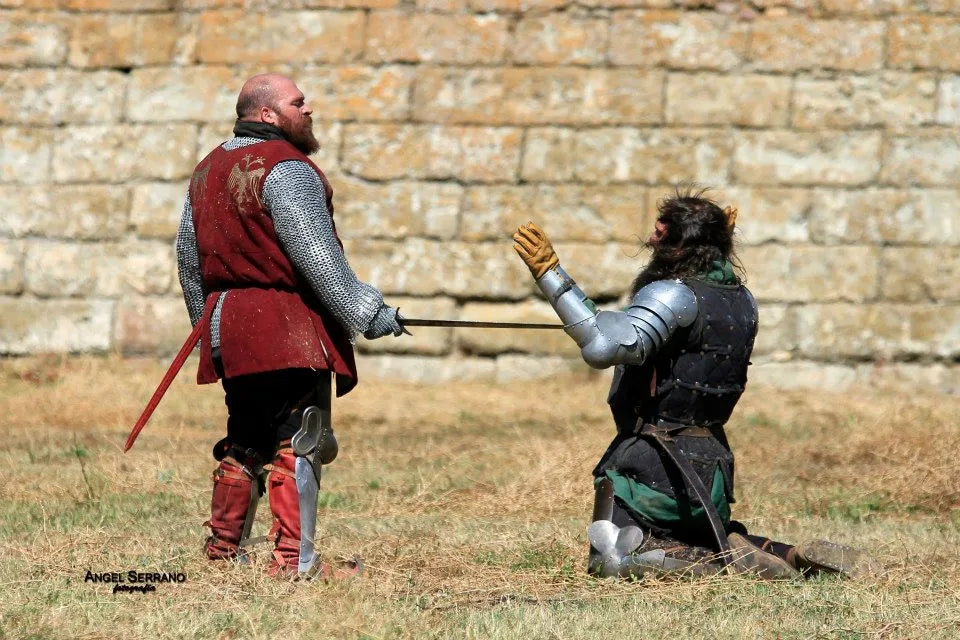Welcome to a new article from Espadas Y Más. Today, we will tell you about the parts of a sword.
As you already know, weapons have varied greatly in potential and details throughout history, and the case of swords was not going to be any different, so in this article, we will talk specifically about the parts of a medieval sword, in general.
PARTS OF A MEDIEVAL SWORD
Pommel : The pommel is the part of the sword that is furthest from the tip. Its main function is to balance the sword, providing a counterweight to the blade. This allows for easier and more controlled handling of the sword. Additionally, in close combat situations, the pommel can be used as a blunt weapon to strike the opponent.
Check out this medieval carbon steel sword
Hilt : The hilt is the part of the sword that is held in the hand. It is designed to be comfortable and provide a good grip, allowing the user to handle the sword with precision and control. Often, the hilt is wrapped in leather or some other soft material to provide extra comfort and a better grip.
Check out this one-handed medieval sword
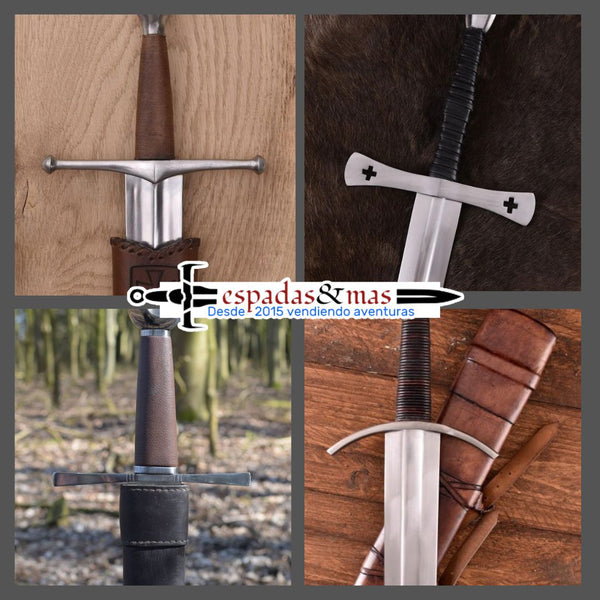
Guard or Crossguard : The guard, also known as the crossguard, is the part of the sword that is located between the hilt and the blade. Its main function is to protect the hand holding the sword from blows from the opponent. The guard can take many forms, from a simple crossbar to more complex and ornate designs.
Check out this medieval German sword
Blade : The blade is the long, straight part of the sword. It can be double-edged (sharpened on both sides) or single-edged. The blade ends in a point, which is used for stabbing. The length, width, and curvature of the blade can vary considerably depending on the type of sword and its purpose.
Edge : The edge is the sharp edge of the blade. In a double-edged sword, both sides of the blade are sharpened. The cutting edge is the part of the sword that is used for cutting and slashing.

Fluting : Fluting is a groove that runs the length of the blade. Its purpose is to reduce the weight of the sword without compromising its strength. This allows for easier and faster handling of the sword.
Tip : The tip is the end of the blade, designed for stabbing or piercing. The shape of the tip can vary depending on the type of sword and its purpose.
Check out this historic medieval sword
Each of these parts has a specific purpose, and together they make the sword an effective tool for combat. Medieval swords were often customized for the knight who would use them, so they can vary in size, shape, and decoration. Although all swords share these basic characteristics, craftsmanship and innovation in their design have led to a wide variety of swords throughout history.
We hope you enjoyed it! See you soon!

